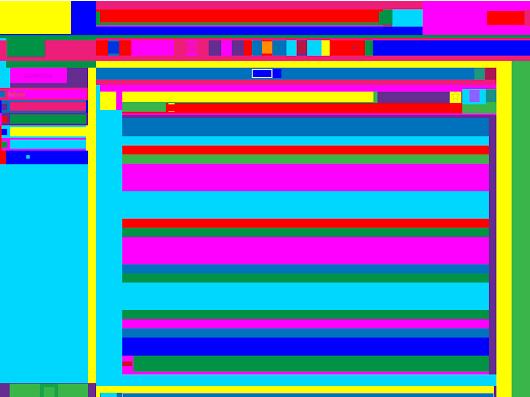Rafaël Rozendaal, Abstract Browsing, Image via newrafael.com
The internet has bred a culture of openness and sharing, where practitioners collaborate and share content and methods. Do the traditional tiered structures of the art world have a place in this new world? What do artists have to gain and lose as art and technology intersect?
Creative practitioners and managers working in emerging technologies discussed the disruptions and tensions that these new media are bringing to the established hierarchies of the art world in a wide-ranging panel discussion at General Assembly on Thursday night.
Technological developments have always provided art with new means for expression but today’s technological possibilities have also changed the possibilities for experiencing and distributing creative work.
Sydney’s Museum of Contemporary Art Australia’s Digital Media Manager Gabby Shaw questioned whether technology had actually caused a rupture in the art world or simply opened up new possibilities.
She said that the MCA has recognised the significance of the digital space, primarily in terms of how museums can use it to connect with audiences. The MCA has recently undertaken its first digital commission, by Marian Tubbs. Once the work has been developed by the artist, the Museum will be tasked with how to present the work, not only in a practical sense, but also taking into account regular audience concerns such as accessibility.
In the institutional space it seems that for now the primary way new technologies are being employed is as an alternative means to expand audiences and build new connections with existing ones. In the past museums used technologies such as audio guides and information points to connect with audiences inside the gallery space, whereas now museum and audience alike can benefit from relatively inexpensive formats such as apps and social media.
The digitising of collections is also becoming popular in the institutional space. Shaw pointed out that ‘digitising’ is a problematic concept. She said digitising is really little more than photographing. It can’t represent much beyond two dimensions, meaning scale, dimensions and tactility are lost.
But Claire Evans of Creative Agency Grumpy Sailor Creative said being able to view something digitally instead of live doesn’t diminish the original, but just opens up an additional new type of experience.
For creative practitioners and managers working with new technologies in a more experimental space, the opportunity to collaborate with art institutions is a welcome one. Evans explained that her organisation, which was incubated through Google’s Creative Lab in Sydney, is currently exploring mobile storytelling through proximity devices such as Bluetooth and Google Cardboard. She enthused that her organisation enjoys collaborating with relatively established arts institutions such as the Australian Centre for the Moving Image and Bell Shakespeare, and that this type of partnership is embraced by both parties. Innovative organisations are often interested in trying out their new developments in the art space, and the art community are usually receptive and more open to experimentation than a non-creative corporate partner might be.
Evans believes that creative producers working with new technologies are creating new human experiences and pushing the boundaries of what is perceived to be art. Crucially, she says, this in turn is challenging the definition of the artist and how we identify them. She emphasised that the people who are now driving change in the art world don’t necessarily identify as artists, and this could be seen as a disruption. She believes that artists, particularly established artists, can’t be relied upon to experiment with new technology, and that the creative developer community should be encourage to outwardly identify as artists, as in the end it is the audience experience that matters, not the label of the person who created the work.
Lukasz Karluk is one such creative coder. As a digital artist at Julapy Interaction Design, and in his personal practice, Karluk creates iPhone apps in collaboration with music labels, interactive installations, and digital art. He explained that as a digital artist it is very difficult to sell your work as it is so easily copied, and modes of display and platform obsolescence are issues.
Karluk introduced the audiences to some recent developments in the monetisation of digital art. This includes individual approaches, such as an artwork in the form of a website created by artist Rafaël Rozendaal which recently sold at auction in New York. There are also a number of platforms designed to market digital art, including Sedition Art, which enables viewers to view content (not own in) on a device via Digital Rights Management. (Shaw elaborated on Sedition’s mix of digital reproductions of works, and genuine digital artworks, which could be seen as problematic.) Another is Framed 2.0, essentially a device to display digital art in the home, which Evans pointed out is digital art mimicking the display of more traditional art forms.
Another way of monetising art is Redbubble, which its Product Delivery Manager Ivan Vysotskiy explained is a marketplace for artists to sell their artwork on physical products such as t-shirts. Vysotskiy sees a symbiosis between the evolution of technology and art (while acknowledging the dimensional limitations of Redbubble’s framework, and its commercial nature).
Artists in the audience were keen to point out the benefits of this symbiosis, describing their successful collaborations with coders in which both parties had learned new skills and new ways of communicating. As these interdisciplinary partnerships increase, and the definition of who is an artist continues to evolve, technological developments will continue to disrupt the art world in as yet unknown ways.





